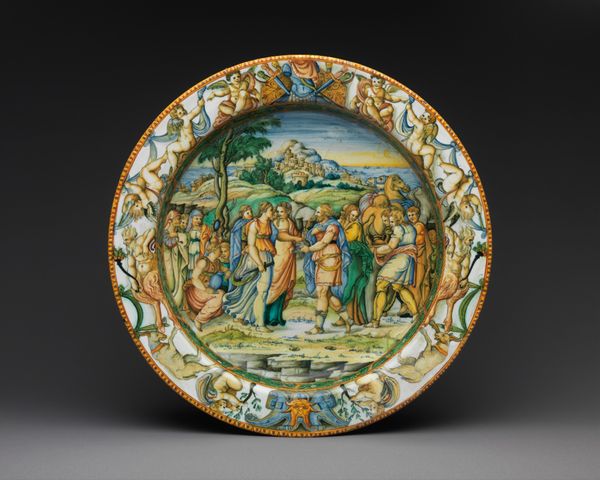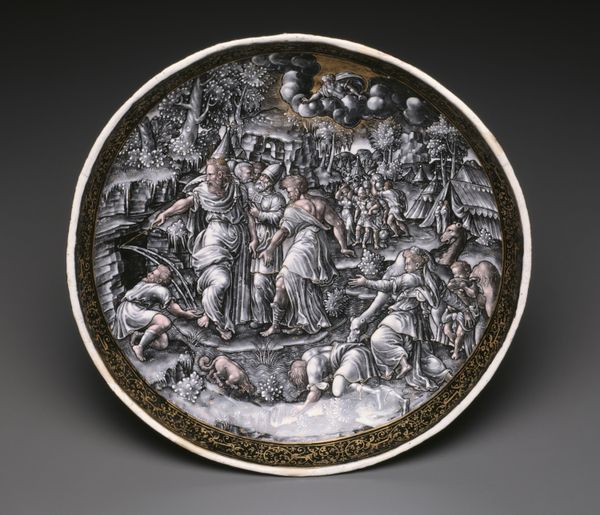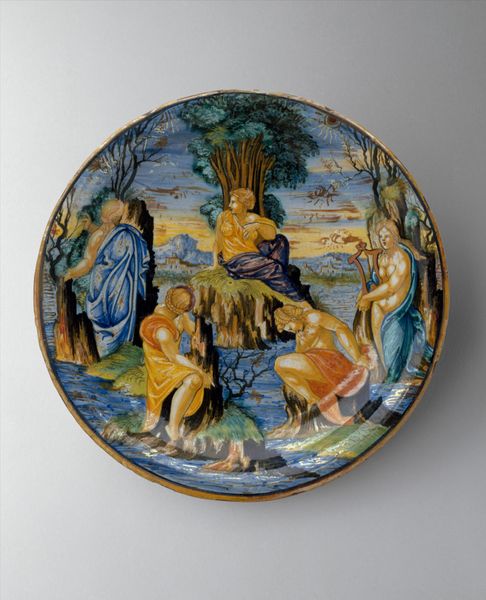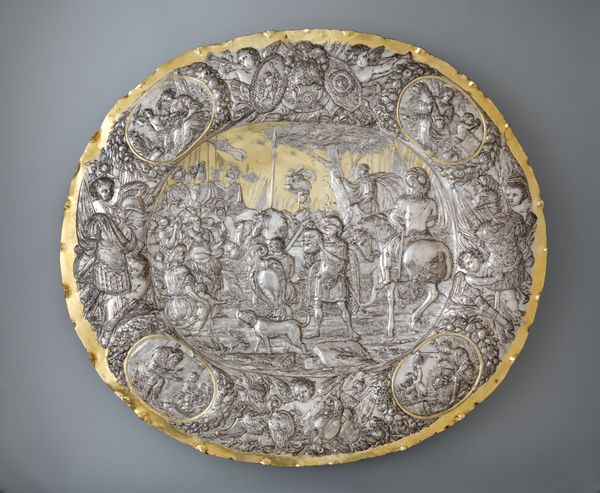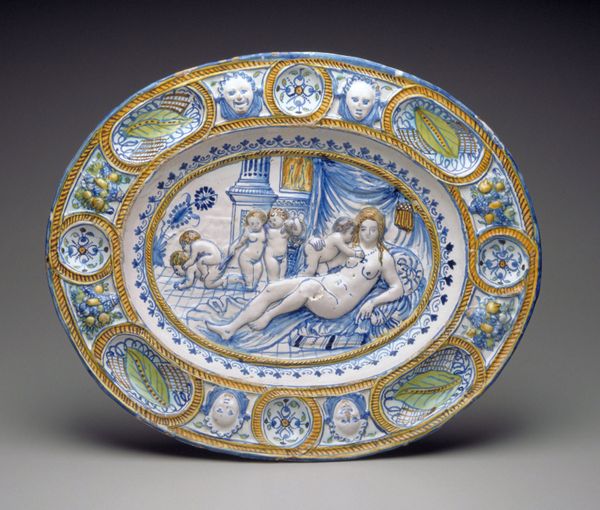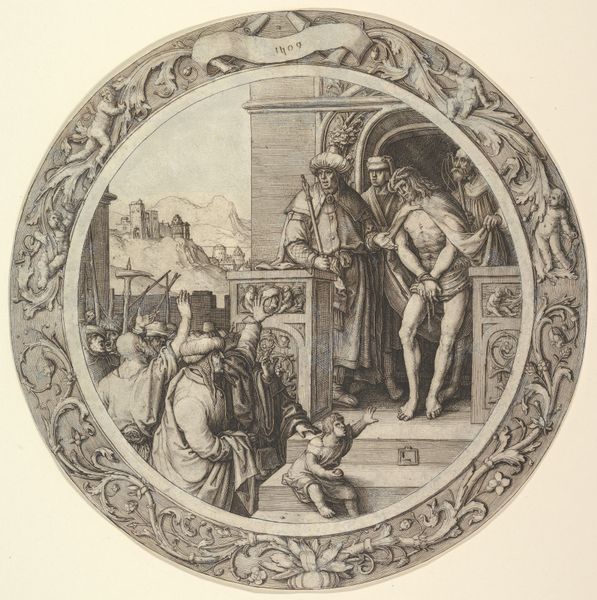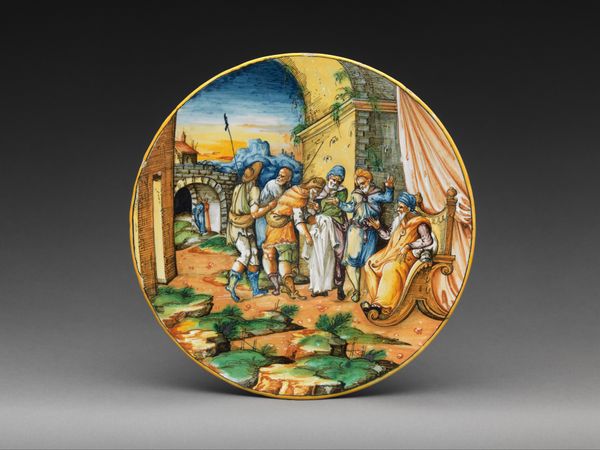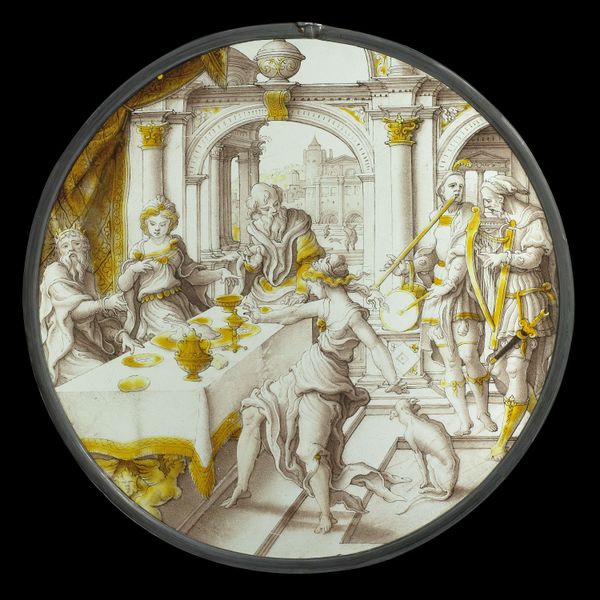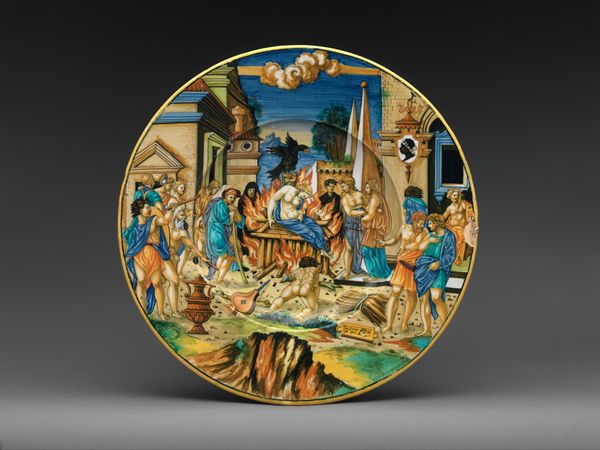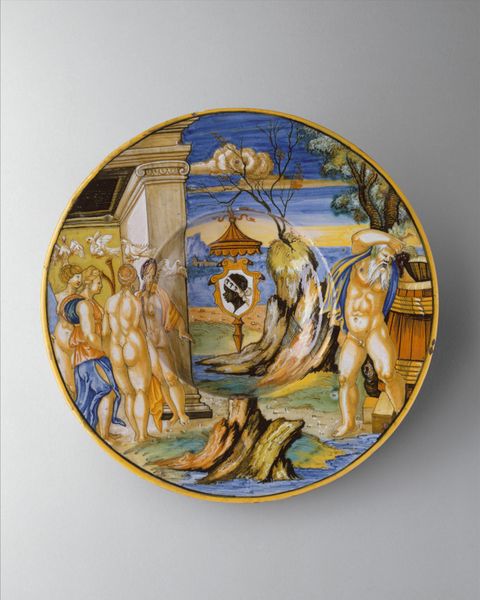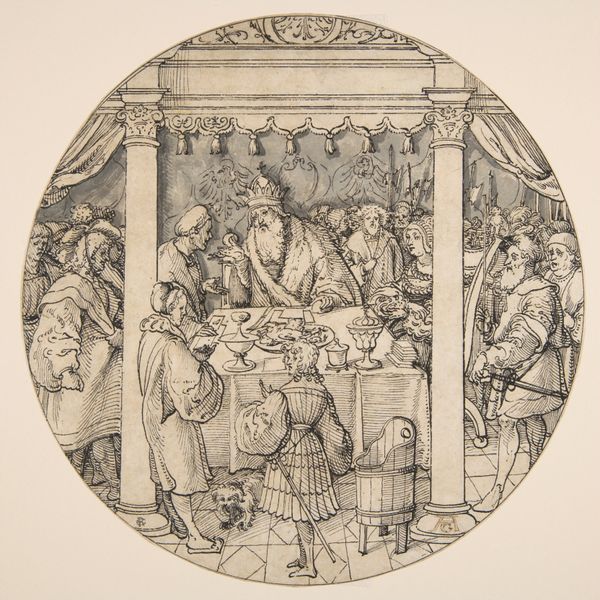
tempera, painting, oil-paint, ceramic, sculpture
#
decorative element
#
allegory
#
tempera
#
pottery
#
3d printed part
#
painting
#
oil-paint
#
ceramic
#
figuration
#
11_renaissance
#
cupid
#
sculpture
#
ceramic
#
genre-painting
#
history-painting
#
decorative-art
#
italian-renaissance
#
decorative art
Dimensions: 19 3/4 × 15 1/4 × 1 3/4 in. (50.2 × 38.7 × 4.4 cm)
Copyright: Public Domain
Curator: Before us is Pierre Reymond’s “The Wedding Feast of Cupid and Psyche,” created in 1558. It is currently housed at the Metropolitan Museum of Art. Editor: It's striking! At first glance, it exudes an ethereal quality, doesn’t it? The monochrome palette, dominated by blues and grays, lends it a dreamlike feel. It also begs the question of its creation—it resembles fine pottery. Curator: That observation aligns perfectly with Reymond’s work. He was a master of painted enamel. Limoges enamel, specifically. It's not merely pottery; it’s a testament to the alchemical processes of firing and fusing glass onto metal. Consider the immense skill and precision involved in achieving such detail using these materials and processes in the 16th century. Editor: Yes, I notice that what seems like a classical scene of figures seated around a table is also depicted on the raised circular dish—and I think I even spy putti! Tell me more? Curator: Exactly! The composition deliberately evokes classical sculpture. Reymond, working in the Renaissance, embraced allegory—an ideal vehicle for the transmission of humanist thought and values. We're observing a harmonious banquet. This "Wedding Feast," set in Olympus, celebrates the union of divine and mortal. Note how carefully the artist used shading and highlights to give form and depth to the figures, and the attention to the folds and patterns in their draped robes. Editor: Absolutely, the materiality contrasts sharply with the idealized subject matter, as the classical figures interact around what appears to be a feast on painted ceramic. One could argue this work embodies the tension between artisanal craft and aspirations for "high" art so common in the Renaissance workshops. The very act of crafting elevates a supposedly domestic object to this allegorical scene. Curator: The border with floral decoration is further emphasized by how these choices frame and contain the narrative within a perfect oval, heightening the piece's decorative appeal. The careful arrangement contributes to the overall sense of idealized balance. It echoes with classical principles in art, further enriching the viewing experience. Editor: Seeing this enameled depiction forces us to reconsider the rigid categories of art. It merges the decorative and the fine. Thanks to this careful layering of materials and images, we've illuminated how Reymond’s craft gives new substance to a traditional scene of a wedding in the heavens.
Comments
No comments
Be the first to comment and join the conversation on the ultimate creative platform.
